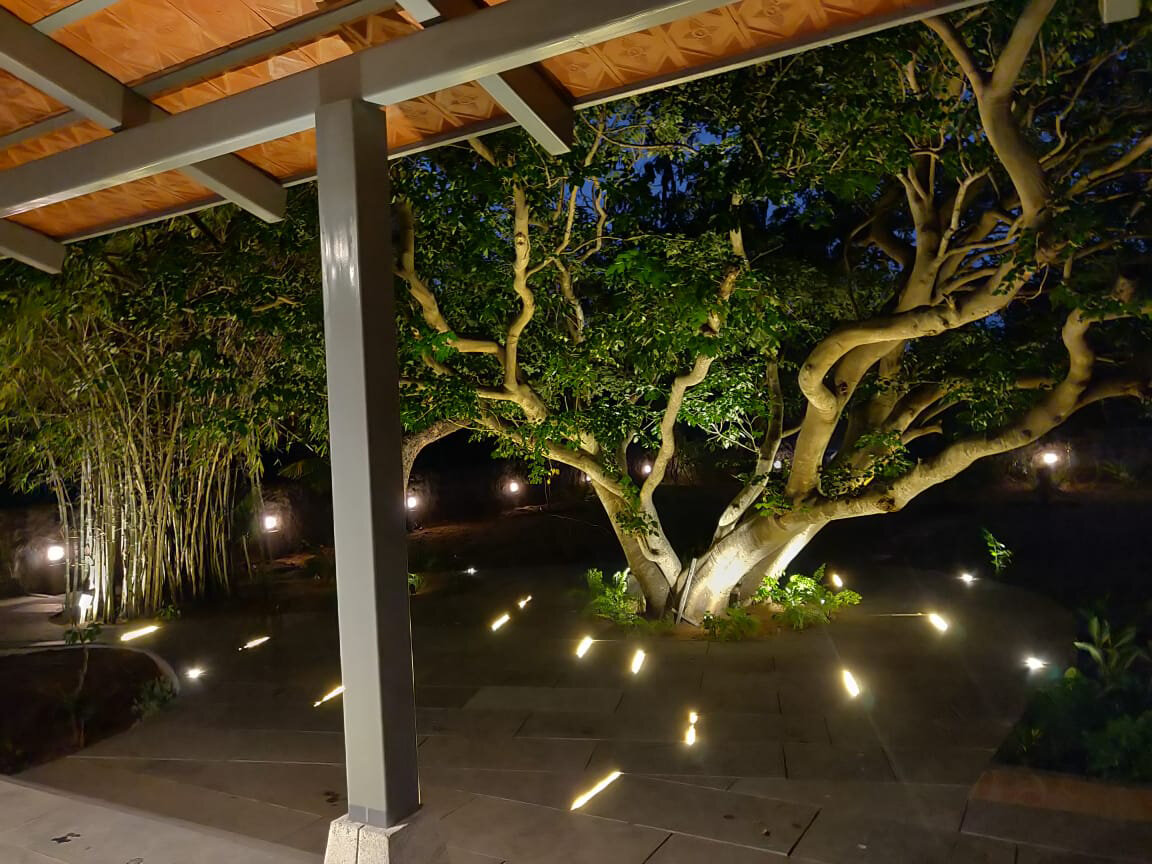CULTURE AND CONTEXT IN ARCHITECTURE
The following is a guest post written by Sneha Srinivasan, architect at SKDO, who was drawn to our practice because of our focus on contextualism. She talks about how her undergraduate thesis project was concerned with contextualism, as well as situating contextualism in the larger debates about architecture and the role of architects in society:
Traditional Kerala wood joinery architecture for sunshades at House with a Pond
Picture Credit: Siddharth Sumitran Photography
CONTEXT IN ARCHITECTURE
Humans need to feel that they belong in a place. We need to have a connection—say, a communion--with our surroundings. In the built environment, we often sacrifice this greater sense of integration with a space for the false security of place identification. Often, this is done clumsily or without any attention paid to local context, and broadly termed as “placemaking”, which is a catchall for projects that strike just the right note, but just as often, completely tone deaf to the surrounding context.
Context in architecture is not an element of design, but various elements and principles of design combine to make a building in context. A combination of parameters, when used with an in depth understanding of the surroundings will help weave together the old and the new— this is in contrast to much of modern architecture that is style-driven.
For example, Frank Gehry’s buildings have a similar signature style, irrespective of the context they are in. This is why his buildings in Bilbao and Boston are immediately recognisable as Gehry buildings, but not necessarily recognisable as buildings from that particular climate or culture.
The Guggenheim Museum in Bilbao, Spain designed by Frank Gehry. Picture Source: https://www.guggenheim-bilbao.eus/en/the-building/outside-the-museum
The Experience Music Centre in Seattle, USA designed by Frank Gehry. Picture Source: https://www.archdaily.com/112371/architecture-city-guide-seattle/experience-music-project
Contextualism bridges the gap between old and new. It means there is a solution that might well be the best of both worlds. Contextualism not only bridges the gap but also encourages more sustainable construction, as it tends to use locally sourced materials and artisans, thus supporting traditional livelihoods and elevating local crafts and knowledge. One fine example of contextualism is Tropical Modernism by Geoffrey Bawa, a design movement in which sensitivity for local context combines with the form-making principles of modernism.
Ena de Silva House in Lunaganga by Geoffrey Bawa. Picture Source: https://www.aljazeera.com/indepth/features/2016/08/sri-lanka-ena-de-silva-moving-house-160830130120782.html
In some cases, an explicit break from the fabric of the city and its historical context makes good sense in light of a building’s purpose, program and importance. A museum, for instance, might reasonably be expected to stand apart from its surroundings. One such striking example is the Jewish museum by Daniel Libeskind which appears dislocated from its surroundings with due cause. However, there are other buildings that stand out for the sake of standing out, turning their back on their rich historical setting, often with flimsy justification.
View of Jewish Museum in Berlin designed by the architect Daniel Liebeskind with the Garden of Exile in the foreground. Source: https://www.reddit.com/r/architecture/comments/6hd2wu/garden_of_exile_in_front_of_libeskinds_jewish/
Personally, the context of a site has always been my biggest inspiration for design in any project. My thesis project was to designing a rehabilitation centre for destitute children and women; this helped me understand how at a very basic level every human craves connection with nature, their surroundings and with one another. In this project, I made use of contextualism to focus on bringing in a sense of belonging to the users.
Context in architecture is therefore a mindful practice of problem solving with reference to buildings and its surroundings. For example, House by the Beach at SKDO has been a perfect example for us to learn and implement contextualism in architecture. The brief was to renovate and elevate an existing beach house with a huge garden. The challenge was to deliberately design the space in context with its surroundings with help of local materials and treatments. The highlight of the project is the landscape, which reflects the native surroundings. This was achieved by planting native shrubs and plants to make the entire project fit in seamlessly with the surrounding. We consciously ensured the architecture provided the backdrop to the landscape rather than the other way round.
Photograph of House by the Beach. Picture source: Client
Thus, one could say that contextualism is an architectural movement that is a response to its surroundings and respects the local. A deep understanding of the surrounding fabric helps in encouraging a context sensitive approach. Contextual design would invariably be a 'wise' design drawing , responsive to the local climate, set in the socio-cultural milieu and in sync with the local spirit, characteristics that may evolve with time and adapt to change but not alter in rootedness.






